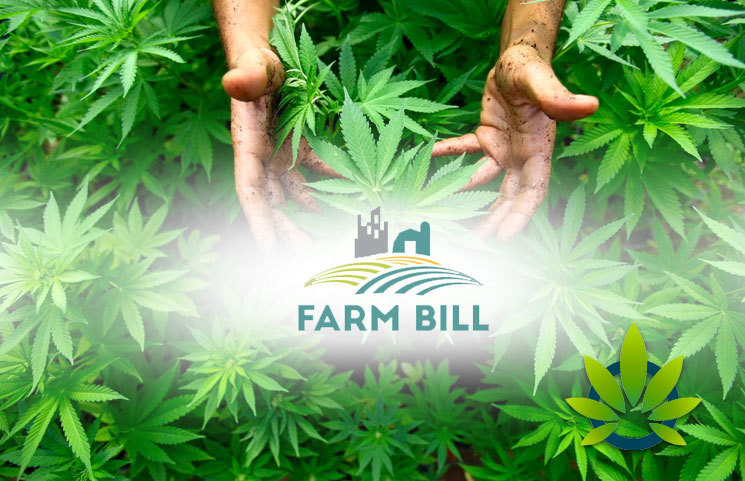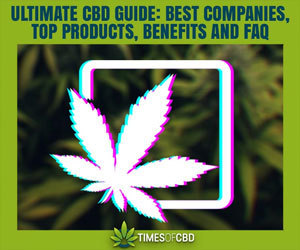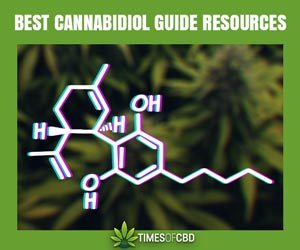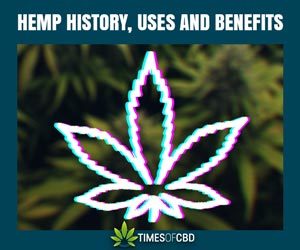Cannabis News
New 2018 Farm Bill Passing Puts Emphasis on CBD-Intensive Hemp Agriculture Practices

The latest developments on hemp farming has invigorated the spirits of researchers and farmers to delve more into the secrets of farming and to get the most out of the crop. The race to relearn the farming of hemp is growing fast among the American farmers and market investors.
North Carolina State agriculture researcher Angela Post had been studying wheat and barley, and similar small grained crops until the Farm Act was amended in December 2018, which allowed to investigate hemp. Post was well versed in agricultural techniques and hence she had the right tools to study hemp like never before.
The Farm bill 2014, which was introduced by the 113th Congress uplifted federal restrictions aimed at growing industrial hemp and allowed states that have legalized its manufacturing to set up research programs to study the benefits of cultivating it. Following the amendments signed by the current US President Donald J. Trump, the 2018 Farm bill removed some cannabis products like cannabidiol (CBD) from the Controlled Substances Act. It also estimated the U.S. CBD market from $2.3 billion to $23 billion by the 2020s.
Initially, farmers who were skeptical in growing hemp were now encouraged to study and grow the crop and extract benefits out of it. This was followed by the lack of proper knowledge about the growth of the plant and optimum results needed in specific time. This caught the attention of many farmers to aspire for hemp farming and hence the race towards hemp farming gained momentum. Since the Post’s works and expertise grew beyond hemp seeds to its flowers and fibers which yielded CBD. CBD is extracted from the hemp flowers and stems. This is particularly important as recent studies and clinical trials have shown numerous health benefits of CBD. CBD has been found useful in treatment of medical conditions like seizures, epilepsy, chronic pain, sleeplessness, PTSD, inflammations, Alzheimer’s and Parkinson’s disease.
Agricultural researchers and residents of Kentucky, North Carolina and Vermont have been wanting to grow and cultivate hemp and the recent developments are encouraging them to take a step ahead. In the ancient times, hemp was cultivated throughout America. However, the association of the psychoactive compound, tetrahydrocannabinol (THC), found in it led to the banning of the plant in the 20th century. The new law developments require more of agriculturalists and experienced personals to fill in the knowledge gap concerning hemp plantation. The proper knowledge about the hemp plant: which seed varieties to use, how to take care of insects and weed and finally how to turn it into profit is lacking among the common mass. People like Post need to come forward to educate and inspire the locals to opt for growing hemp on a large scale and extract the vivid benefits both economically and medically.
History of Hemp Farming and Use
The Drug Enforcement Agency (DEA) had, until recently, banned cannabis and put it under Schedule I drugs, criminalizing any use or research on the plant or its products. Following to fail to abide by the laws, one could be fined or imprisoned for possessing and growing marijuana. These strict enforcements had made any research impossible. However, in most of Europe and Canada, cannabis was still allowed and decriminalized implying people could use and study about the product. This has now transcended to the states recently following the Farm Bill Act 2018.
Cannabis or hemp was a popular crop among the native Americans and Mexicans for more than 200 years. Until early 1900’s, the radical temperament of the Americans against alcohol consumption was rising rapidly and wildly. At this time many Americans underwent the ethnic prejudice that Mexican immigrants were causing and committing cannabis related crimes. This resulted in many western states with majority Mexican population to criminalize the cannabis plant. Eventually, around 29 states passed a ban on the plant. This also got into the federal government and they declared that marijuana be classified as a potentially harmful substance in a bill passed in 1957. This led to the taxation of imported marijuana upto $400 per year. Even those who would break these rules faced punishments like imprisonment up to 5 years and fines as high as $35,000 equivalent on this date. As a matter of fact in the coming years by 1971, the federal government put marijuana under Schedule I drug and deemed it more on terms of abuse than of no practical medical use.
Gradually as more controlled research and clinical studies were carried out on cannabis, researchers and scientists believed that cannabis needed to be classified into 2 broad types- the already known psychoactive THC and the newly found CBD, which was termed non-psychoactive. They also found that CBD could have numerous health benefits for the treatment of various medical conditions. Since hemp was still a classified crop, it was going to take time until Americans could produce it again and use it legally.
As a matter of fact, the hemp imports were on the rise as the hemp products were used for fiber, insulation, paint, and fuel. The seeds were used for eating directly and in the cosmetics industry. The later developments showed that CBD could be extracted from the hemp plant. By 2017, the hemp imports by the US were around $67.3 billion worth of seeds and fiber products. The CBD market was worth around $200 million. And then came the Farm bill of 2014, which allowed states to grow hemp, overseeing its potential market value. This also allowed some states to study its properties, most importantly of CBD. However, there were many bumps to this process as for growing or even studying hemp, it would need to go through the state government, agriculture department and the local DEA. Most of the time, people wouldn’t do it.
The Path of Realization
An agronomy professor at the University of Vermont, Heather Darby said she had to face many restrictions when she approached the Vermont Agency of Agriculture, Food and Markets and also from the local DEA authorities when she tried to carry out projects on hemp growing and corresponding studies. She was enthusiastic in starting hemp related projects as her university was a land grant school in a state which had lifted cannabis bans. Her official request files were stalled at the local offices by bureaucracy and she said ‘navigating these oversights was the biggest hurdle.’ Post also faced similar challenges in carrying out her hemp related projects. She would often face arrests if she was found by cops driving around with hemp buds. The biggest challenge was in getting funds approved for research and cultivation efforts. Researchers wouldn’t get enough funds even after the 2014 Farm Bill. Most of the land grant universities are under the federal laws and administrators didn’t allow channelizing funds to a Schedule I drug.
The University of Kentucky, a land grant school, approached private companies to fund their hemp projects according to David Williams, a plant and soil scientist. Majority of these researches produced by such partnerships were made public, even though investors of such projects wanted results to be proprietary. At the University of Vermont, Darby could get it that the private funds wanted the information to be secured and not shared publicly. This was also creating a hurdle in going ahead with the research work. As a result, she started crowdsourcing to fund her research. Though they had aimed at $25,000 in 2016, they could only collect as low as a quarter for their project. Post succeeded in securing a $100,000 fund in the past 2 years from the North Carolina Department of Agriculture and in 2018, she also secured a $16,000 fund alone for her pesticide research from the USDA. With several of her requests being successful, she understands that entering the competition pool with a crop like a hemp is intimidating. She says that most people are afraid to put their energy and time into it knowing the odds of it. It was already hard for crops like corn and soybean and for a small crop like hemp, it was rather a daunting task.
Despite all these confusions and obstructions, scientists are trying to solve the complexities revolving around hemp farming. Many farmers are trying with two key strains that yield seeds and fiber. Thanks to the research work that has already been done in this field by the Europeans and Canadians, the public is aware of the major US crop-hemp seeds and fiber, where farmers sow the seeds and harvest them with the help of machines, as hemp fiber was the prime industrial products from the crop until now. There is also a lack of proper research and academic studies that is been dedicated to the other aspects of hemp, where the potential to successful hemp farming lies.
Following these challenges that lay ahead, Post like many other hemp scientists began exploring on how to get the maximum yield with optimum input. She made the local environments her first priority towards adopting a successful technique. The appropriate amount of nutrients like Nitrogen, Phosphorus and Potassium required by the crop were studied through the use of different fertilizers. Post also pondered on the idea of different seed varieties to check the maximum yield. Researchers at the University of Kentucky were also calculating the row spacing and the number of seeds required to produce five tons of hemp fiber per acre-the amount a field would need to produce to compete and sustain other crops like wheat, corn and soybean.
Along with the nutrients and seed varieties needed to grow hemp successfully, another aspect like taking care of the plant from insects and weed is also important. These need to be controlled to get sufficient output. In the US, farmers can spray only limited legal pesticide on a crop if instructions allow for use on the particular product label and for hemp, no chemicals are approved. In order to guide farmers on the right path to production, Post was allowed to test pesticides on hemp for getting the right yield without any health effects. Even though she is allowed to test pesticides, she is trying for ways to get the best way to go without using it by non-chemical means like seed and fiber variety which gives faster vegetation. Also, the shade from the leaves of the plant can discourage the growth of weed that eats up the nutrients meant for the crop.
There is currently a gold rush in the hemp farming industry, as there is a higher incentive to CBD and its properties. So any potential production or processing model is evaluated seriously at some level across the U.S. One of the strategies involved would be to extract more CBD from the flowers, stems and seeds. Researchers are trying out which way leads to more output in a faster time, like growing the plant from the seeds or by cloning the plant. The later one has more eyes on it as many say it is a better way to grow. However, cloning from the identical plant sometimes offer a difference in smell and taste and also in looks. This baffles the researchers like Post and they are going deeper into the plant’s genetics. In Vermont, Darby is taking a deeper look by assessing the plant’s terroir. This is related to why the smell, taste and look of the plants vary according to exact environmental conditions.
Currently, terroir investigations are a far way to go as more people are involved in minimizing risks and managing them. As said by Darby, when they want to set up a farmer they don’t want the farmer to lose any hope or success. She doesn’t want a farmer to be growing hemp for four years and still wondering which is the right way to do it. In the face of all the research that has been done and whatever experience they have, Darby is still unsure if she can help farmers with the best technique.
The Current State of Hemp Economy
The frugality of the hemp economy is also debatable in modern times. According to statistics from the last fall season in Kentucky, 61% of the hemp was for CBD extraction in the event of the Farm Bill 2014. Williams says currently the processors are investing too much on the crop and there is a very fickle trend of the market prices. The prices were very volatile make investors worry for the long term. CBD oil extractors are paying around $2,000 to as much as $10,000 per acre. Such prices are way too higher from agriculture and production point of views. Such high prices demand the production of CBD intensive hemp. This is an unsustainable method, as any agriculture or healthy farming economy requires diverse crops. The rise and fall in the price of CBD also possess a challenge for stable income from the hemp plant.
Although in the states where hemp cultivation and research studies are being funded and pursued by faculty members, there is still much hesitation surrounding its future. However, Post is hopeful that in North Carolina growers will expand their businesses as the government allows its use now. Due to the new amendments in the federal laws more investigators, who were previously stalled, will step in and the hemp agriculture landscape will change.
Final Thoughts on Wishful Hemp Farming
There are pros and cons of every action. Moving too fast in the direction of hemp farming may have aftermaths. Many scholars including Post fear that farmers may repeat the earlier failures like in 2015, when North Carolina started its pilot program on hemp farming, the state allowed individuals to apply for growing permits which meanwhile the university researchers were granted. It worked well for a short time as according to the Rural Advancement Foundation International-USA reports, farmers who were in previous financial debts tended to opt for tasks which had higher incomes as well as risks. Some farmers were in debts as high as $15,000 to $20,000. As said by Post, some growers gain a lot and others don’t.






